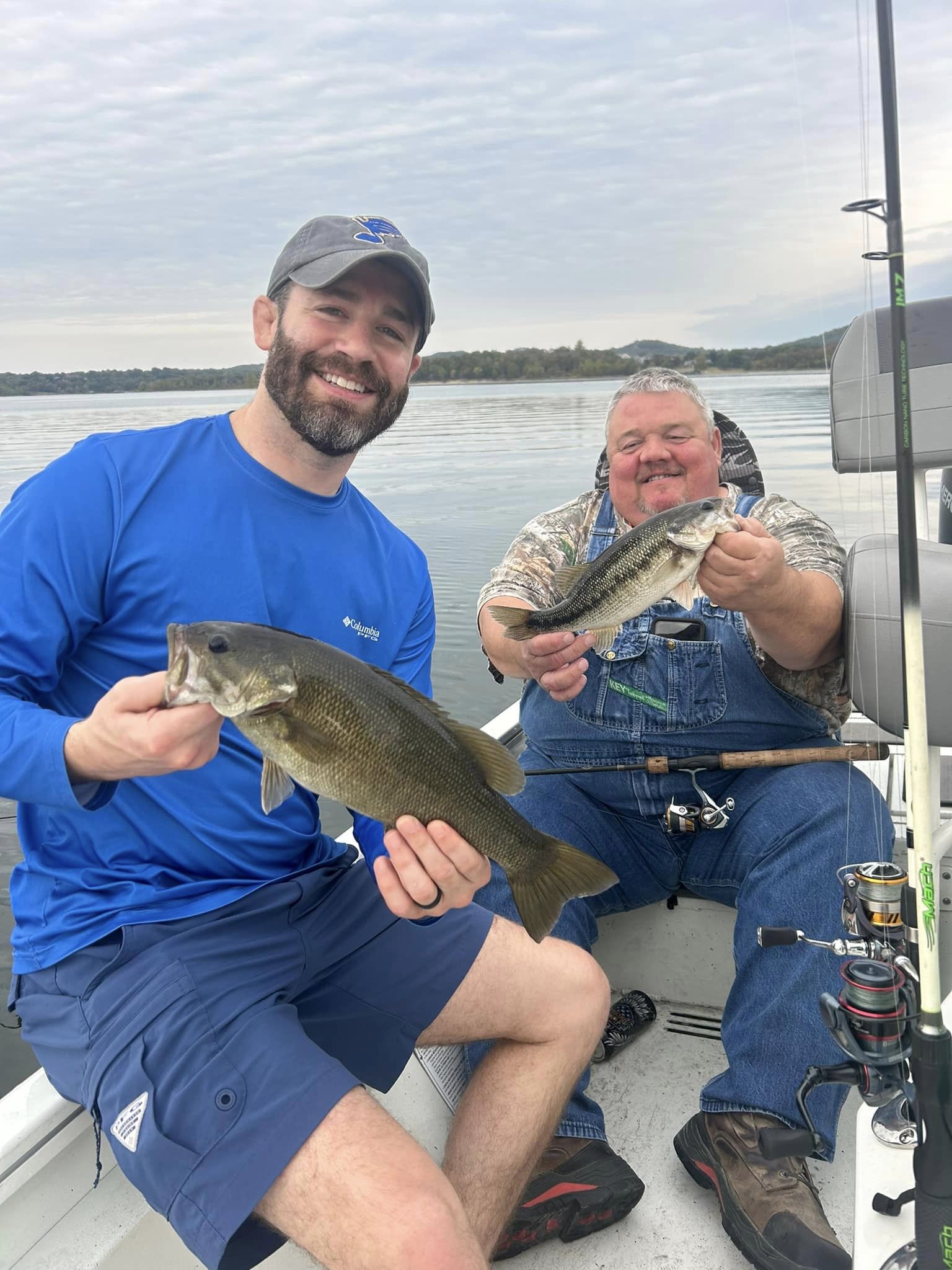River, Lake Fishing in Anderson
Lake Hartwell Half Day
Rogers Arkansas Fishing Trips
Lake Guntersville FishingTrip
Lake Fishing in Kimberling City
4- 6 Hours -Table Rock Lake
Lake Of The Ozarks Pro Fishing
Brazos River Drift Trip
Brazos River Luxury Overnight
Hill Country Bass Trips
Sam Rayburn Bass Trips
Sam Rayburn Crappie, And Catfish
We started Captain Experiences to make it easy to book fishing and hunting guides around the world. With over 2,000 Damn Good Guides, our platform makes finding and booking a trip seamless. Head here to check out our trips.
Bass are a popular sport fish that can be found in many lakes and rivers across the country. There are two main types of bass- smallmouth and largemouth. Both of these fish can be caught using various techniques, but the most important part is using the right bait. In this blog post, we will discuss how to catch both smallmouth and largemouth bass, as well as what the best bait to use is for each one. We'll also teach you how to hold a bass properly once you've caught it!
Catching Smallmouth Bass
Smallmouth bass are usually found in cooler waters than largemouth, and they prefer rocky areas. They are often found in rivers and streams, which are oxygen rich waters with rocky bottoms. Smallmouth bass prefer live bait, and can be caught using minnows or worms. You should also use a decently heavy weight to help your bait sink. To catch a smallmouth bass, cast your line out into the water and let it sink to the bottom. Then you can start jigging, which involves pulling your line in slow jerks to make the bait jiggle up and down in the water. Hopefully, a smallmouth bass sees the struggling bait and senses an easy target, then goes in for a bite. You may feel a few bumps, but keep reeling until you feel a solid pull. Then, set the hook and reel in your fish!

Catching Largemouth Bass
Largemouth bass are typically found in warmer waters and around vegetation. They prefer the sandy bottoms of lakes and ponds, where they can hide and feed amongst the vegetation. The best bait to use for largemouth bass is an artificial lure. Largemouths are crafty, and won’t be as tempted by a drifting worm. However, a spinning lure catches their eye and can tempt a bite. Baitcasting can be a great way to catch largemouth bass. Using a spinning reel and an artificial lure, cast your line out and let it sink to the bottom. Once it's on the bottom, start reeling in slowly. You may feel a few tangles in the vegetation, which is a good sign you might be near a largemouth bass. Keep slowly reeling until you feel a solid pull. Then, set the hook and reel in your fish!
Holding Your Catch
Once you've caught a bass, it's important to hold it properly so that you don't damage the fish. Place your thumb in the space between the fish's gills and its body, and then support the fish's belly with your other hand. This will help keep the fish healthy and alive so that you can release it back into the water. Make sure to snap a picture while you have the bass in hand! Bass are a great target fish for young anglers, and the memory of their first catch may last a lifetime. Once that picture is taken, gently release the bass back into the water. Practicing catch and release is a great way to preserve the balance of our world’s fisheries while also enjoying the fun of fishing.
Milo Kashey
Updated on July 31, 2023

April 15, 2022

January 19, 2021

July 1, 2024

October 26, 2020

January 7, 2022
Related Articles
May 22, 2022
August 1, 2022
July 26, 2022
Featured Locations
- Fishing Charters Near Me
- Austin Fishing Guides
- Biloxi Fishing Charters
- Bradenton Fishing Charters
- Cabo San Lucas Fishing Charters
- Cancun Fishing Charters
- Cape Coral Fishing Charters
- Charleston Fishing Charters
- Clearwater Fishing Charters
- Corpus Christi Fishing Charters
- Crystal River Fishing Charters
- Dauphin Island Fishing Charters
- Daytona Beach Fishing Charters
- Destin Fishing Charters
- Fort Lauderdale Fishing Charters
- Fort Myers Fishing Charters
- Fort Walton Beach Fishing Charters
- Galveston Fishing Charters
- Gulf Shores Fishing Charters
- Hatteras Fishing Charters
- Hilton Head Fishing Charters
- Islamorada Fishing Charters
- Jacksonville Fishing Charters
- Jupiter Fishing Charters
- Key Largo Fishing Charters
- Key West Fishing Charters
- Kona Fishing Charters
- Lakeside Marblehead Fishing Charters
- Marathon Fishing Charters
- Marco Island Fishing Charters
- Miami Fishing Charters
- Montauk Fishing Charters
- Morehead City Fishing Charters
- Naples Fishing Charters
- New Orleans Fishing Charters
- New Smyrna Beach Fishing Charters
- Ocean City Fishing Charters
- Orange Beach Fishing Charters
- Panama City Beach Fishing Charters
- Pensacola Fishing Charters
- Pompano Beach Fishing Charters
- Port Aransas Fishing Charters
- Port Orange Fishing Charters
- Rockport Fishing Charters
- San Diego Fishing Charters
- San Juan Fishing Charters
- Sarasota Fishing Charters
- South Padre Island Fishing Charters
- St. Augustine Fishing Charters
- St. Petersburg Fishing Charters
- Tampa Fishing Charters
- Tarpon Springs Fishing Charters
- Venice Fishing Charters
- Virginia Beach Fishing Charters
- West Palm Beach Fishing Charters
- Wilmington Fishing Charters
- Wrightsville Beach Fishing Charters


































